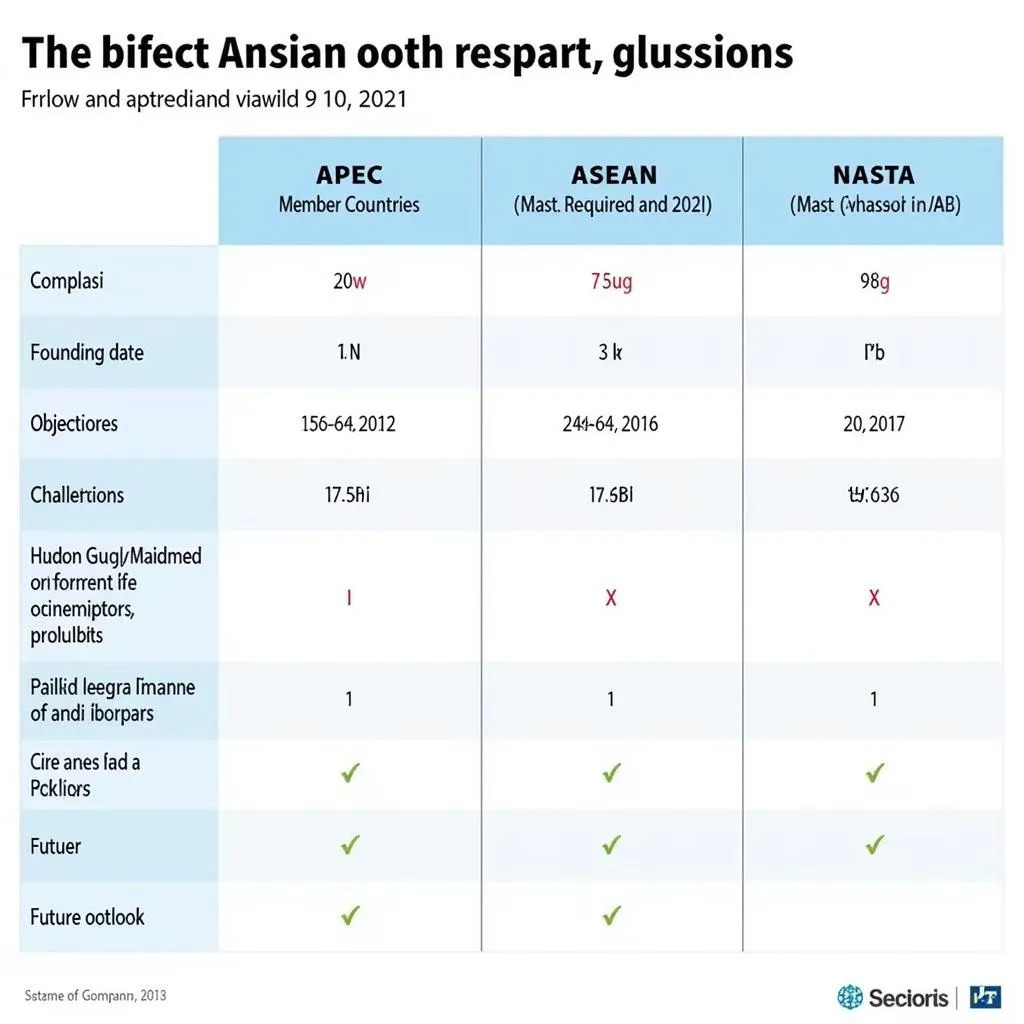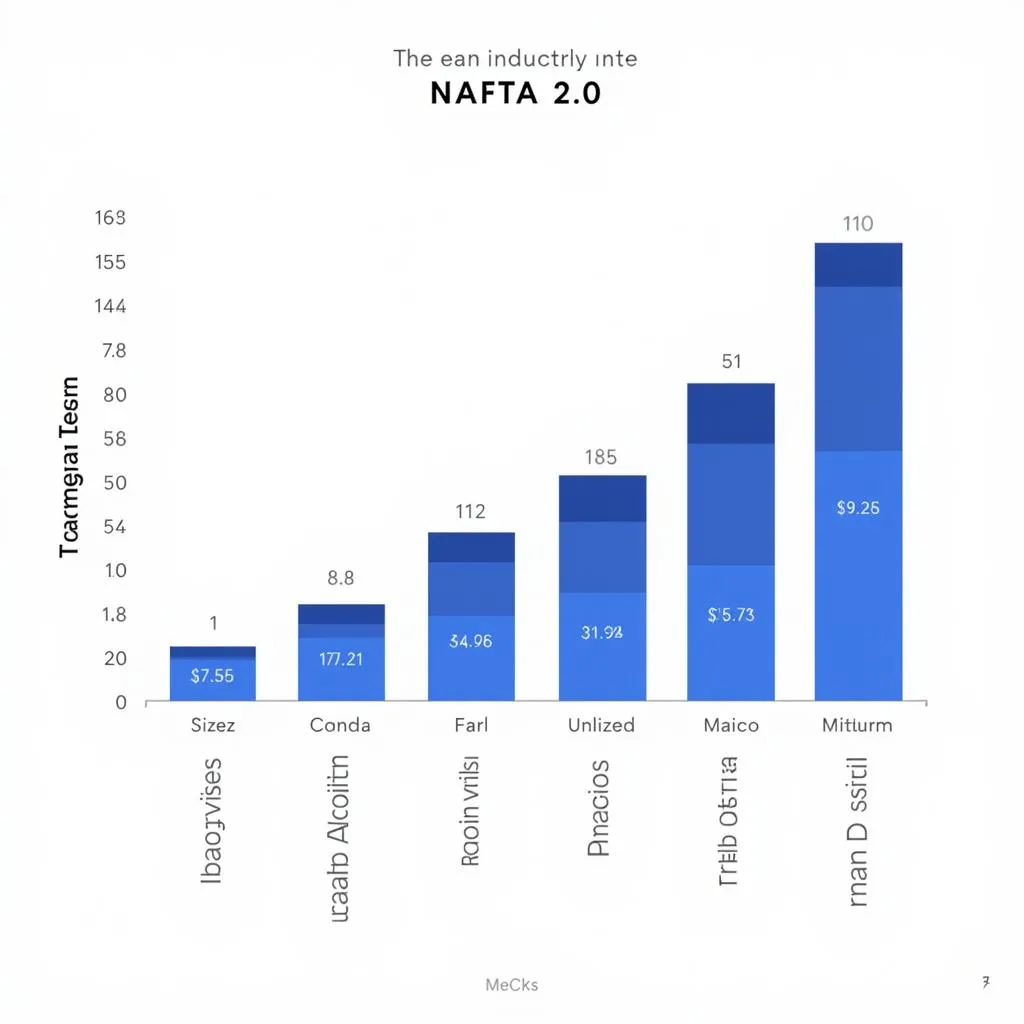The global landscape of trade is constantly evolving, shaped by intricate agreements and alliances. Among the most influential forces are regional trade blocs like APEC, ASEAN, and NAFTA, each playing a crucial role in fostering economic cooperation and growth. But how exactly do these blocs function, and what are their implications on a global scale? This article delves into the dynamics of APEC, ASEAN, and NAFTA, examining their respective impacts on international trade and investment.
 APEC, ASEAN, and NAFTA comparison table
APEC, ASEAN, and NAFTA comparison table
Decoding Regional Trade Blocs: A Closer Look
Regional trade blocs are intergovernmental agreements where participating countries agree to reduce or eliminate trade barriers among themselves. These barriers can include tariffs, quotas, and other protectionist measures. By removing such obstacles, trade blocs aim to facilitate the free flow of goods, services, and investments between member nations, ultimately fostering economic growth and integration within the region.
APEC: Fostering Economic Cooperation in the Asia-Pacific
The Asia-Pacific Economic Cooperation (APEC) forum, established in 1989, stands as a testament to the growing economic interdependence of the Asia-Pacific region. Comprising 21 member economies, including economic powerhouses like the United States, China, and Japan, APEC accounts for a significant portion of global trade and GDP. Unlike traditional trade blocs with legally binding agreements, APEC operates on a non-binding, consensus-based approach.
 APEC's role in enhancing supply chain connectivity
APEC's role in enhancing supply chain connectivity
One of APEC’s primary goals is to promote trade liberalization and investment facilitation across the Asia-Pacific. This is achieved through various initiatives, including:
- Tariff Reductions: APEC members work towards lowering tariffs and other trade barriers, making it easier for businesses within the region to trade with each other.
- Trade Facilitation: APEC actively seeks to streamline customs procedures, simplify regulations, and enhance supply chain connectivity to reduce the time and cost associated with cross-border trade.
- Investment Liberalization: The forum encourages greater flows of investment within the region by working towards more transparent and predictable investment environments.
ASEAN: Southeast Asia’s Engine for Economic Integration
The Association of Southeast Asian Nations (ASEAN) stands as a testament to regional integration in Southeast Asia. Founded in 1967, ASEAN comprises 10 member states, aiming to accelerate economic growth, social progress, and cultural development within the region. The ASEAN Economic Community (AEC), established in 2015, represents a significant step towards achieving these goals.
The AEC envisions a highly integrated and cohesive regional economy characterized by:
- A Single Market and Production Base: ASEAN aims to create a single market and production base where goods, services, investments, skilled labor, and capital flow seamlessly across national borders.
- A Competitive Economic Region: Through initiatives to enhance competitiveness and innovation, ASEAN seeks to position itself as a formidable player in the global market.
- Equitable Economic Development: ASEAN is committed to ensuring equitable economic development across all member states, particularly by narrowing the development gap and assisting less-developed economies.
NAFTA 2.0: The Evolution of North American Trade
The North American Free Trade Agreement (NAFTA), enacted in 1994, dramatically reshaped the economic landscape of North America. This trilateral trade bloc, comprising the United States, Canada, and Mexico, aimed to eliminate trade barriers and promote economic integration among the three nations.
 The Impact of NAFTA 2.0 on Key North American Industries
The Impact of NAFTA 2.0 on Key North American Industries
In 2020, NAFTA was replaced by the United States-Mexico-Canada Agreement (USMCA), also known as NAFTA 2.0. While building upon the foundation of NAFTA, USMCA introduces several key updates, including:
- Rules of Origin: USMCA implements stricter rules of origin, particularly in the automotive sector, to encourage manufacturing within the North American region.
- Labor Provisions: The agreement includes enhanced labor provisions aimed at improving working conditions and wages in Mexico, ultimately seeking to level the playing field for workers across the three countries.
- Digital Trade: Recognizing the burgeoning digital economy, USMCA incorporates provisions that address digital trade, promoting cross-border data flows and prohibiting customs duties on digital products.
The Future of Regional Trade Blocs
As global trade dynamics shift and evolve, regional trade blocs like APEC, ASEAN, and NAFTA continue to adapt and redefine their roles. The future of these blocs will likely be shaped by various factors, including:
- The Rise of Bilateral Trade Agreements: The increasing prevalence of bilateral trade agreements presents both opportunities and challenges for regional blocs. While bilateral deals can complement regional integration efforts, they can also potentially undermine the coherence and effectiveness of broader regional agreements.
- The Evolving Geopolitical Landscape: Shifting geopolitical dynamics, including evolving power balances and emerging trade tensions, can significantly influence the direction of regional trade blocs.
- Technological Advancements: Rapid technological advancements, particularly in areas such as e-commerce and digital trade, necessitate that regional blocs adapt their frameworks and rules to keep pace with the evolving nature of trade.
Conclusion
APEC, ASEAN, and NAFTA exemplify the profound impact of regional trade blocs on the global economy. By fostering economic cooperation, reducing trade barriers, and promoting investment, these blocs have undoubtedly contributed to increased trade, investment, and economic growth within their respective regions. As the global trade landscape continues to evolve, understanding the dynamics and implications of these influential regional blocs remains crucial for businesses, policymakers, and anyone seeking to navigate the complexities of international trade.


